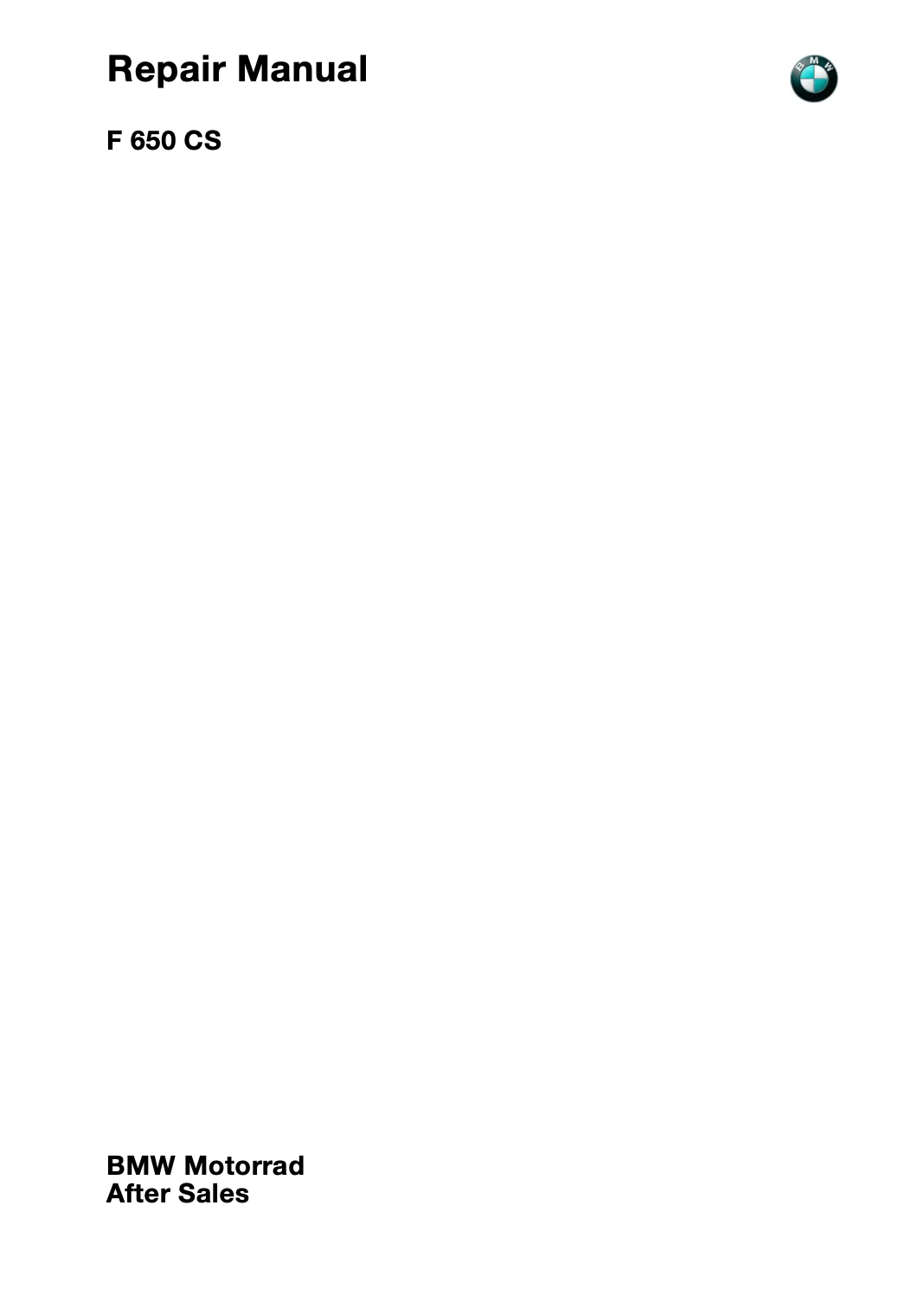Complete PDF version of the Service Manual for the BMW F 650 CS. A MUST for every F650CS owner.
Download: Immediately after payment!
OEM Original factory workshop manual.
Models covered by this manual: 2001 to 2005
Number of pages: 352 pages
Table of contents:


This PDF repair manual can be downloaded right after the payment process in complete, on the device of your choice.
We do not offer printed manuals, for the following reasons:
- it is more eco-friendly to use a digital version
- your manual never gets dirty or greasy
- you can always choose to print the specific page(s) you need to work on your bike
- you receive your manual immediately after payment
- it is searchable
BMW F650CS
From 2001 through 2005, BMW Motorrad produced the BMW F650CS as a standard motorbike. The Scarver, a combination of street and carver, was also known as the CS, which stood for city/street since it was aimed at metropolitan commuters. After the 1993–2001 F650 and the 2000–7 F650GS, the CS was the third iteration in the F650 single series.
Design
The F650CS was developed by American David Robb, who was Vice President of BMW Motorrad Design from 1993 to 2012 and was responsible for the R1100RT, K1200RS, R1200C, R1100S, and K1200LT. The bike was created as a result of a collaboration between BMW and Aprilia.
Many design elements, such as the eye-catching colors used for the coordinated body panels, the Space Age instrument panel, translucent passenger grab handles, and slickly serviceable storage compartment, had a consumer appliance feel and appearance, “reminding you of current computer peripherals such as HP ScanJet printers.” Its little transparent wind screen appeared “iMac-inspired,” and the usage of translucent polycarbonate elsewhere hinted to Apple’s current aesthetic. Rider magazine said that the insertion of extra rectangular holes with discordant rubber inserts around the sides of the metal frame was “overstyled.” BMW “took a leaf from Apple Computer Inc’s strategy book” with its three “youth-oriented” color options, azure blue metallic, golden orange metallic, and beluga blue.
The F650CS offered distinctive color options for the side panels, either to match the other body panels or in aluminum, as well as a choice of two seat colors, for a total of 24 combinations. This versatility extended to the top storage compartment, which came with a tiny removable soft bag and could be used for an optional bigger soft shoulder bag or a hard plastic case with an audio system and a CD player. The ignition key corresponded to all three locking compartment choices, and the audio system was connected with the speedometer so that it automatically raised the music level at greater speeds and decreased the bass at lower speeds.
While the F650CS was comparable to the GS introduced in 2000, it featured a few differences, such as a single-sided swingarm, toothed belt drive, modular soft case luggage, and a storage place in what would normally be the top tank of the bike. The petrol tank was instead installed behind the back part of the seat, with the fuel filling cap located on the right side of the bike’s rear.
A toothed belt drive is cleaner, quieter, and more responsive than a chain drive, and it requires less maintenance, but it suffers from higher power losses.
BMW has traditionally preferred shaft drive, but for the first time chose belt drive for this application due to cost and weight advantages over shaft drive, as well as the lack of frequent cleaning, lubrication, and adjustment required by roller chain drive, as well as lasting longer and running quieter. The use of belt drive was in keeping with the intention of attracting new riders who might not be familiar with the mechanical chores that come with riding.
Though belt drives lose more power than chains, which are common on high-performance motorcycles, they do not suffer from chain lash because chains must be kept slightly loose while belts remain tight at all times, meaning the drivetrain’s responsiveness is comparable to a heavier and more expensive shaft drive.
Performance
The Rotax single-cylinder engine was underpowered in comparison to the liter class superbikes available for the same price at the time, but on its own terms, it was excellent. The bike’s 44.2 horsepower (33.0 kW) (rear wheel) power was more than enough for lively riding in the city, and the 59.9 Nm (44.2 lbfft) rear wheel torque allowed for simple acceleration when navigating in traffic. The handling was light and fast, and unexpectedly delightful in low-speed twisties and canyon bends, according to testers. Acceleration was measured from 0 to 60 mph (0 to 97 km/h) in 4.72 to 5.47 seconds and from 99.9 mph (160.8 km/h) to the 14 mile in 13.07 seconds. Braking distance from 60 to 0 miles per hour (97 to 0 km/h) was 116.5 to 118.5 feet (35.5 to 36.1 m).
Source: Wikipedia


